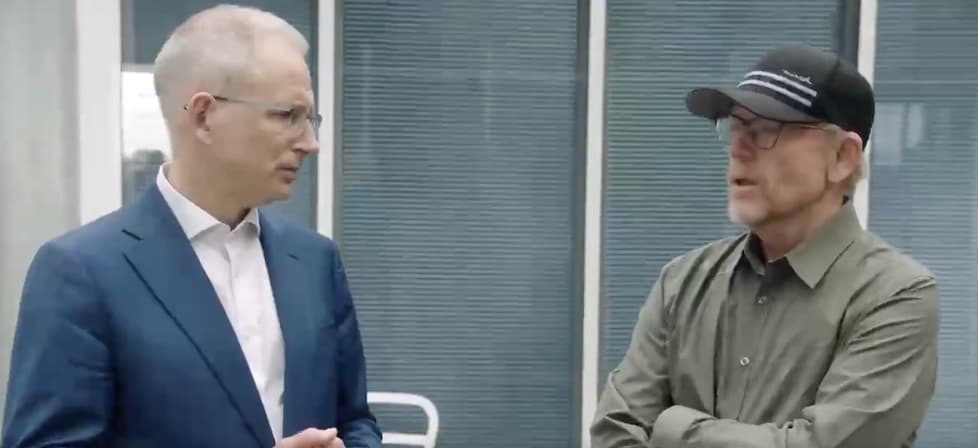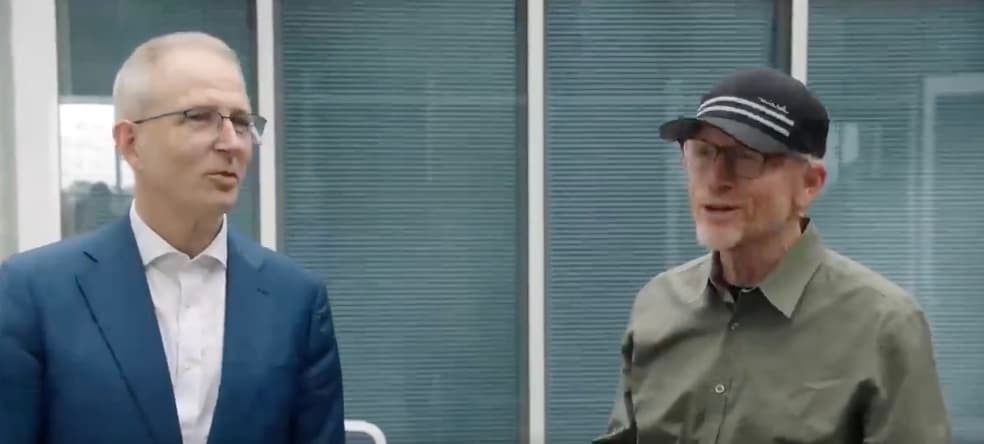The Minister for Communications, Urban Infrastructure, Cities and the Arts Paul Fletcher needs to be across a lot in his portfolio. In the past few days he has been meeting with film director Ron Howard on the set of his movie Thirteen Lives in Queensland, helping celebrate World Radio Day and extolling the virtues of Sydney’s new Western Sydney Airport and the Ipswich Motorway Upgrade which he visited.
He has squeezed in a meeting with Facebook founder Mark Zuckerberg and conducted a swag of interviews including CNBC and he will be on Q+A tomorrow.
Paul Fletcher also delivered a keynote one day one of SPA’s virtual Screen Forever conference yesterday.
The sector might have been hoping for news about mandating investment levels for SVOD and AVOD services operating in Australia, but there are no dates yet about legislative action.
The minister started reminding his audience of the changing patterns of video content consumption.
“We’ve seen challenges within our domestic market with advertising-based business models unable to deliver the returns necessary to justify investment in many genres of media content,” said Fletcher.

Minister Paul Fletcher with director Ron Howard in Queensland last week
“While free to air television maintains a strong hold on news and current affairs viewership, the overall audience for linear free to air television has declined at an annual rate of 6 per cent from 2014 to 2019. We’re now seeing people increasingly turning to online subscription services to access genres like drama, comedy, action and documentary. The shift is particularly stark in younger age groups.
“In the first quarter of 2020 almost 70 per cent of Australians aged over 14 used a description video on demand service, up from just over 20 per cent in the first quarter of 2016.”
The minister noted the FTA TV business model has been fundamentally challenged by the arrival of the streaming services with the flow-on consequences for the screen production sector.
Fletcher noted the Government understands action is needed. “Because the way that Australians consume screen content is changing we need to make sure that our incentives and our regulations are changing as well. As new ways of delivering content have continued to expand the market, the government has faced a choice – we could sit here and do nothing, but the prognosis for the screen sector in Australia would be quite grim.
“We could sit back and simply watch while the variety of Australian content declines, jobs are lost and fewer Australian voices and stories are heard. Alternatively, we could engage with the opportunities that change presents and set out to preserve the vibrancy and quality of the Australian screen sector.
“For me, the choice was very clear: we needed to lean in and take action rather than sitting back and doing nothing. The Australian screen sector, after all, plays an important role in creating jobs and stimulating the economy just as, and arguably even more importantly, it plays a vital role in shaping Australia’s national identity and in reflecting the diversity of our population.”
See also: Make It Australian: Screen creatives call for action on local content
For those who might think the government has been inactive, the minister reminded them: “In 2019-20, $439 million in funding was delivered, supporting content production, the promotion of Australia as a film destination and the training of screen practitioners.”
The minister then got around to recapping action the government has planned: “As part of the reform agenda we’re proposing to introduce a new class of commercial television broadcasting licence. The proposal is that this new licence would continue to be subject to the 55 per cent overall Australian content requirement and the new more flexible sub-quota arrangements for children’s drama and documentary content which took effect from 1 January this year. The system would be designed to encourage broadcasters to invest in the content that their audiences want while providing incentives for high-value production.
“The green paper also contains a proposal that large subscription video on demand services – or SVODS – and advertising video on demand services – or AVODS – which operate in Australia should be required to invest a proportion of their Australian revenues in Australian content. This proposal would support the continuing creation of Australian stories on our screens as SVOD and AVOD services grow in popularity with Australian consumers. At the moment SVODs and AVODs face no regulatory requirement to provide Australian content.”
Why the delay? “These reforms, as set out in the green paper, are significant and complex and there will be a development process, including interaction with the media sector, the broadcasting sector and the screen sector as we develop and refine these ideas before we are in a position to consider legislating them,” explained Paul Fletcher.
